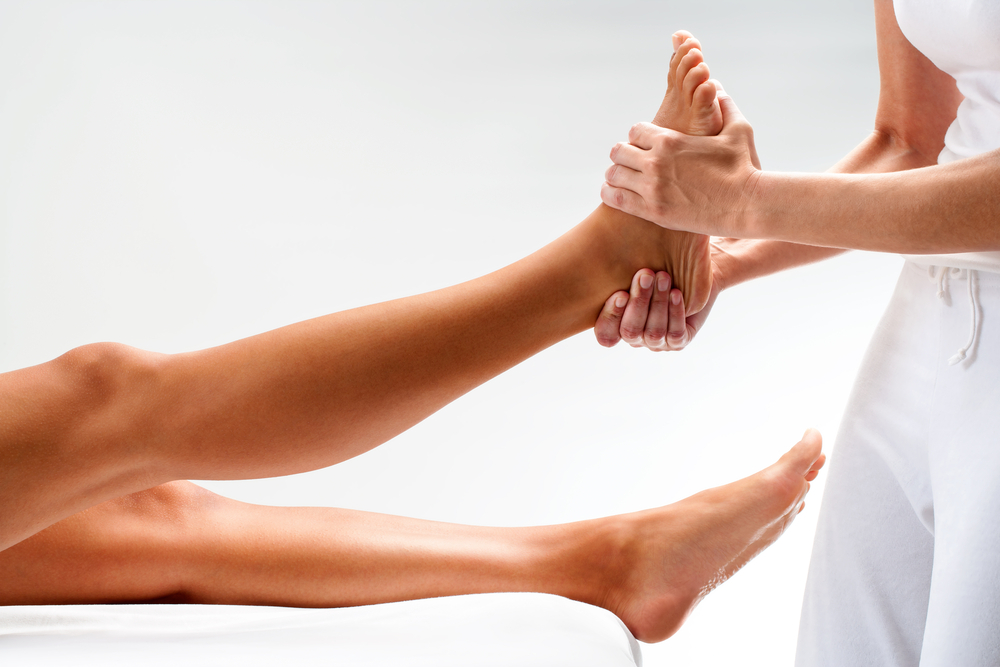Solutions
Dry Needling
Dry Needling is a technique involving the insertion of a fine filament needle (teeny tiny) into a muscle. We are targeting myofascial trigger points which are irritable, tight bands of muscle tissue. These can cause the tissue to become shortened, tighten or spasm causing pain and myofascial pain pathology syndrome. Podiatrists can use a combination of these local muscle points with traditional acupuncture points to establish a change in the activity of the muscle.
What a cool piece of equipment this is!! The computerised force platform system is a pressure plate that the patient walks over and stands on. This gives the Podiatrist a unique view from under the foot! The computer reads high resolution and real time information to present detailed 2D and 3D graphics to show how the foot is functioning at each stage of the gait cycle. This recorded information can be slowed down and studied in a frame by frame capacity. It is also used to evaluate the effectiveness of treatment!
The other impressive feature of this technology is the analysis of left to right pressures when the patient is standing still on the plate. This gives wonderful information about postural sway which can be affected by diseases, fascial tension and pain, and leg length imbalances!
Pelvic rotation, joint surgery, scoliosis and muscle imbalances are just some of the common causes that underlie differences in leg length. And of course one may have just been built that way (yes, we'll add that to the list of questions to ask God when we get there). Needless to say, having one leg longer than the other can cause huge problems for the hips, knees and of course the feet!
Barefoot Rehab
Our feet are designed to move!! As we protect our feet safely in our cushioned shoes every day, our feet can become lazy and weak. Inspired by the research of Dr Emily Splichal, I believe that weak intrinsic muscles of the foot cause the breakdown of the fascial and connective tissues. If the muscles cannot support the foot when it is still or as it moves, then tissues will become overloaded. We must make and keep our feet strong! My treatments revolve around a rehabilitation program to overcome these weaknesses.
Orthoses
Orthoses are devices worn in shoes to straighten up the foot, making it more centred. When the foot is centred, the muscles which attach into the foot can work in a more efficient way, and the joints of the foot and ankle can function within their safe and optimum range of motion.
Generic (off the shelf) orthoses can be effectively used for many conditions and often provide adequate correction of the foot position.
Custom orthoses are sometimes indicated if more specific control is required to increase or decrease the force being loaded through a particular joint or tissues of the foot.
The comfort of custom orthoses is maximised if the shape of the foot is accurately captured in a model from which the orthotics are designed. Stirling Podiatry uses a 3D scanner for this purpose and an orthotic lab to manufacture the devices. Stirling Podiatry does not use computer generated orthoses, as we have found that the results of such devices cannot be guaranteed.
Joint Mobilisation / Manipulation
Foot mobilisation and manipulation are manual therapies which aim to mobilise the joints of the foot and ankle to help restore normal joint motion and function. Adhesions or stiff joint capsules are released with these movements, improving the elasticity of the foot and the ability for the foot to adjust to irregular surfaces, and move in complex and multidirectional ways.
Instruments which can be used to help with joint mobilisations include the Activator and the Vibracussor. The Vibracussor emits a vibration which penetrates deep into the joint tissues. Motion is restored as the joints become more loose and lubricated.
Low Level Laser Therapy
This modality (treatment) enhances the repair of cellular damage, as commonly seen in tendonitis and fasciitis injuries. When applied to injured tissue in the early acute stages, low level laser causes metabolic changes in cells which amplifies and stimulates tissue repair, therefore relieving pain and speeding up recovery. It is particularly helpful too in rebooting the repair process of old injuries. It does this by stimulating old scar tissue causing a second chapter of repair to begin. Low level laser therapy is also used for the treatment of Lymphoedema (chronic swelling caused by deficiencies in the lymphatic system), contracted scar tissue (including keloid) and connective tissue disorders such as Dupuytrens contracture. Low level Laser seems to also have a relaxing effect on tight tissues or muscles in spasm and can be used in combination with dry needling techniques.







